Ubuntu Configuration
You can have a look at Ubuntu's Install Guide for further information. However, most of it seems outdated for the most recent Ubuntu versions. Therefore, I will document the whole process and considerations.
Starting Point
Coming from the BIOS Setup section, we are left at the beginning of the Ubuntu configuration after selecting Try or Install Ubuntu Server.
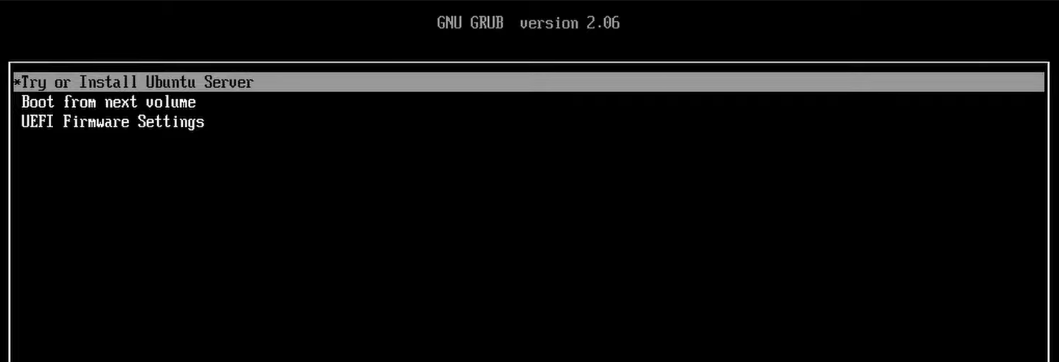
Connect your machine to the router using an Ethernet cable to receive updates during installation. An established internet connection will also let you set up IPv4 and IPv6 addresses for the setup.
Ethernet Connection
When setting up a node for blockchain networks, the choice of network connection can significantly impact the node's performance and reliability. Using an Ethernet connection is often the preferred method over Wi-Fi for several reasons:
- Stability: Ethernet connections provide a more stable and consistent connection than Wi-Fi. Wired connections are less prone to signal interference and environmental factors affecting Wi-Fi performance, resulting in fewer disconnections or connectivity issues.
- Speed: Ethernet connections generally offer higher data transfer speeds than Wi-Fi. A gigabit Ethernet connection can reach up to 1000 Mbps, while most Wi-Fi connections are limited to a few hundred Mbps. This increased speed translates into better performance and reduced latency for your node, allowing for faster data processing and communication with other nodes.
- Security: Ethernet connections are inherently more secure than Wi-Fi, as they require physical access to the network cable to intercept or tamper with the transmitted data. Wi-Fi networks are susceptible to various security threats, such as eavesdropping or man-in-the-middle attacks, which could compromise the integrity and privacy of the data being processed by your node.
- Reduced Packet Loss: Ethernet connections typically experience lower packet loss rates than Wi-Fi. Packet loss can cause delays in data transmission and affect the overall performance of your node. With a wired Ethernet connection, your node can maintain a more reliable and efficient data transfer, ensuring optimal operation.
- Easy Troubleshooting: Troubleshooting connectivity issues is generally more straightforward with Ethernet connections. Diagnosing and resolving network issues becomes more precise with fewer variables, such as signal strength, interference, or router configuration.
1.3.1 System Language

First, you have to choose your operating system's language. It's recommended to set it to English. In case errors appear on the screen, most guides and guides for fixes are stated in English if you search for them online. So it will help to resolve incidents quickly.
1.3.2 Keyboard Config
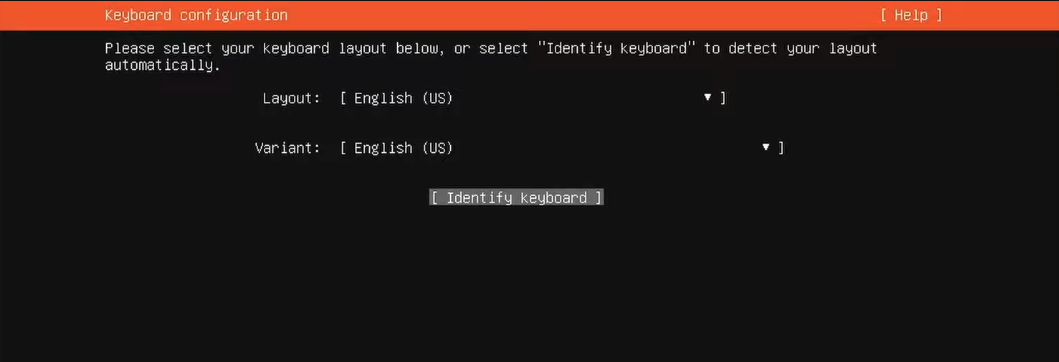
Right after, define your keyboard type or click Identify keyboard and follow the guide.
1.3.3 Installation Type
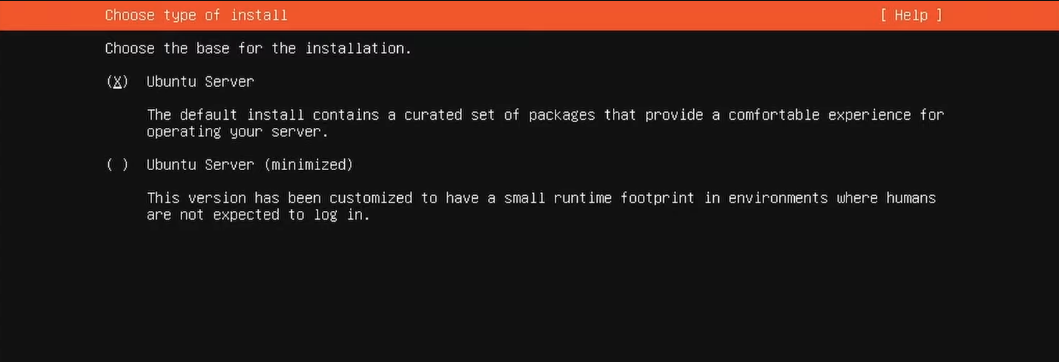
Choose your type of installation for the node:
Ubuntu ServerUbuntu Server (minimized)
Here are some of the core differences:
Minimized Ubuntu Server has 420 packages installed.
Regular Ubuntu Server has 606 packages installed.
That is a 31% reduction.
Minimized Ubuntu Server takes up ~4,200 MB storage when initially installed
Regular Ubuntu Server takes up ~4,600 MB storage when initially installed
That is a difference of 400 MB in size, a reduction of 11%.
Minimized Ubuntu Server uses ~180,000 KB of RAM
Regular Ubuntu Server uses ~197,000 KB of RAM
That is a difference of 17,000 KB of RAM, a reduction of 9%.
User Interaction on Minimized Ubuntu Server:
- No text editor (vi, vim, nano)
- No `ufw` nor `iptables` commands
- No man pages (documentation)
As the installation screen states, Ubuntu Server (minimized) is designed for automated deployment at scale for cloud substrates without user interaction. They use the optimized kernels, optimized boot process, and significantly reduced default packages to be smaller, boot faster, and require fewer security updates over time. All those properties might be vital if you're maintaining multiple VMs or containers.
While Ubuntu Server (minimized) boils down to saving packets and having a slightly faster system, it can be a hazard for our node maintenance, as it would mean that you have to install every tool package during the node setup manually.
During some minimal version test runs, this also affected some internal processes without throwing errors during run time. Because of the lack of process documentation, some logging services are not triggered on the core system. The reduced logging affects checking the status of external software, which expects log or configuration data creation. Here, specific files had to be manually created and adjusted for status commands to work.
Installing the Ubuntu Server version is recommended, as we want to do all user interaction ourselves and need text editors, firewall configuration, and, most importantly, all available backend processes that might break some automation.
Shoutout to Lumenous, who helped me clarify these differences
Do not have Search for third-party drivers enabled. Only remote access is needed, which will be installed later during the installation process. Other applications and web services could potentially harm the software, security, and ease of software maintenance in the long run.
1.3.4 Network and Access Settings
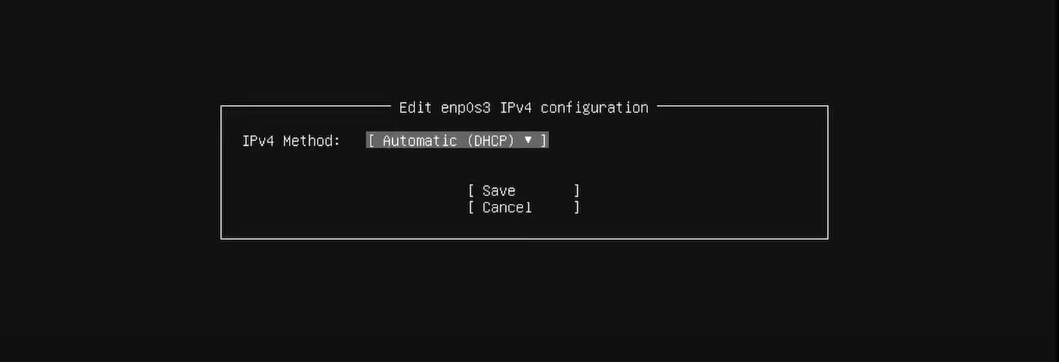
Now configure your network settings to talk to the node from the outside world. If your node is connected via Ethernet, choose the network type eth and edit IPv4 and IPv6 to both set as Automatic (DHCP). We will configure the static IP later but allow various connections to reach the node later.
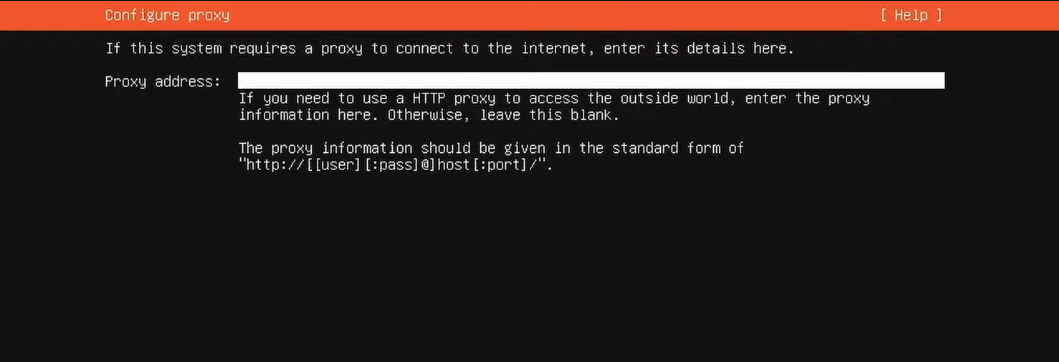
If you do not already have a proxy setup, leave the proxy address blank. We will update the HTTP proxy to access the node later on.
1.3.5 Download and Installer
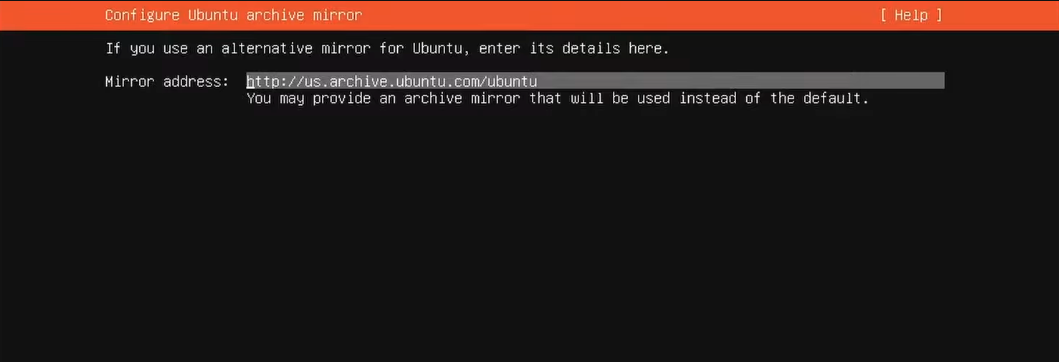 Leave the official Ubuntu mirror address and continue with the setup.
Leave the official Ubuntu mirror address and continue with the setup.
If there is any new installer during the next step, download the latest version, and you will get back to this step after it is done. It's always recommended to use the newest software releases.
1.3.6 Storage Setup
For storage, set the entire disk.
Logical Volume Manager
It's generally recommended to enable the LVM group option. A flexible management system allows you to set and resize your storage volumes easily. If you plan to run multiple blockchain nodes or might add another disk later on, LVM can be beneficial. If you need to add more storage space later, you can easily add a new disk to the existing LVM group and expand the logical volumes as needed. A logical combination would mean you do not have to split your data folders across multiple storage devices. Maintenance can be done without downtime, re-sync, or data loss. It also allows for resizing storage volumes, so you can easily resize them on the fly, allowing you to adapt to changing storage requirements of your blockchain node.
Considering the benefits, LVM is also enabled on new Dappnode machines and has been set as default on Ubuntu since version 20.04.
Some trade-offs when using LVM are the complexity of disk management and a tiny performance dint in performance. The advanced features might not be needed if you have lots of SSD space and want to run everything on the primary physical partition. If you are unsure, activate the option- maybe you run out of storage space at some point and do not want to re-sync or configure data folders of blockchain data.
Encryption
Encryption is unnecessary, as you could encrypt a small portion of the disk later if needed. Encrypting the whole disk could become cumbersome for remote access, requiring manual intervention each time the server is restarted. There are ways to automate the unlocking process, such as using a remote key server or network-bound disk encryption. However, these methods can increase complexity and may have security implications.
Your validator keys are safe anyway, as they are encrypted by default. The validator also has its encrypted wallet needed to restart the client with a modified address for the fee recipient. The only risk here is physical access or modification- except for the keys or wallet. These could include log data, configuration files, or other personal data stored on the node. The added complexity is unnecessary if these points are not deemed high-risk.
Storage Configuration
On the storage configuration screen, you will see your available physical disks with their physically available storage and mount points. If you enabled LVM before, it automatically created a volume group with a logical volume inside.
The volume group can be seen as a parent container of multiple digital storage partitions, so-called logical volumes. These groups can extend across multiple physical disks.
By default, the logical volume will have the size of 100GB to allow flexibility of partitions. To change properties, you can select ubuntu-lv under ubuntu-vg (new) in the USED DEVICES section to adjust the logical volume's name, size, and format in a pop-up window.
If you are sure you want to use the whole disk space available, set the Size property of the logical volume to the maximum value shown in front of the input field of the logical volumes pop-up window.
Within the system setup section of the guide, there is also a whole chapter about extending the LVM storage of a logical volume later on and how new disks can be added to your system.
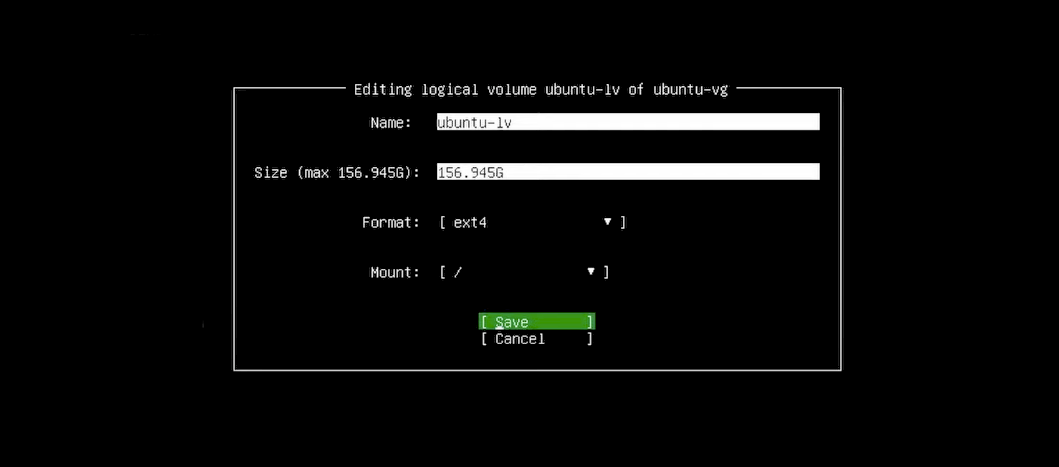
Partition Naming
The name of the volume group ubuntu-vg and logical volumes, e.g., ubuntu-lv can be changed. If you do not plan to have different partitions for different blockchain networks, leaving the default names is recommended. Keeping the default naming is highly recommended and helps not create confusion later. It also helps you out when you post logs somewhere- since everyone can associate the default names with the LVM setup.
Storage Formats
The same default values rule also applies to the default storage format ext4. Storage formats like ext2, ext3, and ext4 are all part of the same family of Linux filesystems, but each brings improvements and added features over the previous. The type ext4 is the most commonly used as it supports files up to 16TB, faster and more efficient disk space allocation, and many other convenience features.
1.3.7 User Configuration
In the next step, pick your user and server names and choose a strong password.

Continue without Ubuntu Pro. It's a premium version of Ubuntu designed for enterprise use and comes with additional features, security updates, and support compared to the standard Ubuntu release. The primary target is businesses and organizations seeking a more comprehensive and secure Ubuntu experience.
1.3.8 SSH Setup
Add the openSSH server installation for secure remote access in the next step. The Open Secure Shell is a suite of safe networking utilities. It enables encrypted communication and fast data transfer between two networked devices, providing a secure alternative to traditional, non-encrypted protocols. openSSH server is widely used for remote administration, secure file transfers, and executing commands on remote systems.
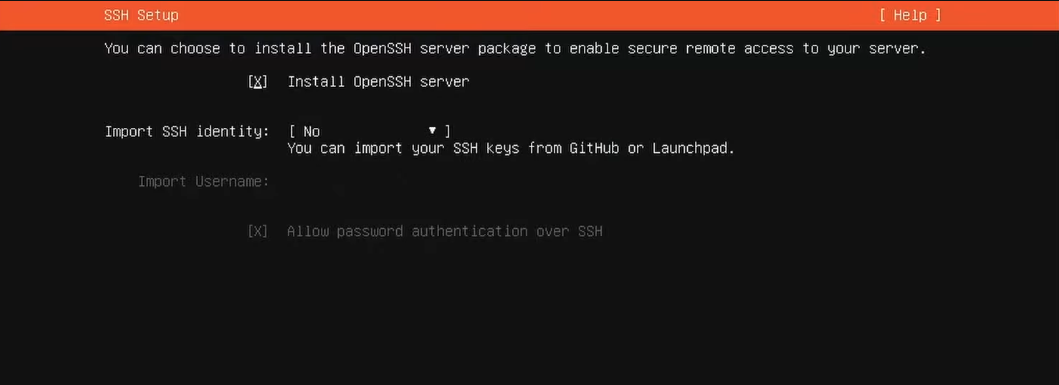
The server-only variant will only allow the connection to the node, not the functionality for the node also to set up a client- which is lean and ideal for a node setup that only wants external devices to connect for maintenance.
In the context of a blockchain node setup, an OpenSSH server offers several key advantages that make it a valuable component:
- Secure remote access: It allows you to remotely access and manage your node using a secure, encrypted connection. Remote access is crucial for maintaining the confidentiality and integrity of your data and commands, mainly when operating the node in a data center, cloud environment, or across untrusted networks.
- Command-line interface: It provides a command-line interface for managing your node, which is the preferred method for administering server-based systems like Ubuntu Server. The command-line interface allows for efficient and scriptable management of your node.
- Key-based authentication: It supports public key authentication, which is more secure than password-based authentication. By using key pairs, you can enhance the security of your node by ensuring that only authorized users with the correct private key can access it.
- Port forwarding and tunneling: It enables port forwarding and tunneling, which can help secure other network services and create encrypted data-transfer tunnels. Such external software can ensure secure communication between your node and other components of the blockchain network or related services.
- Extensive compatibility: openSSH server is widely supported across various platforms and operating systems, making integrating into a diverse range of node and client setups easy.
If you do not have an SSH configuration, leave the SSH identity blank. We will configure access later on.
1.3.9 Additional Software
It's recommended to skip through the additional server snaps without enabling packages. The best practice would be choosing the packages later when installing or configuring specific software.
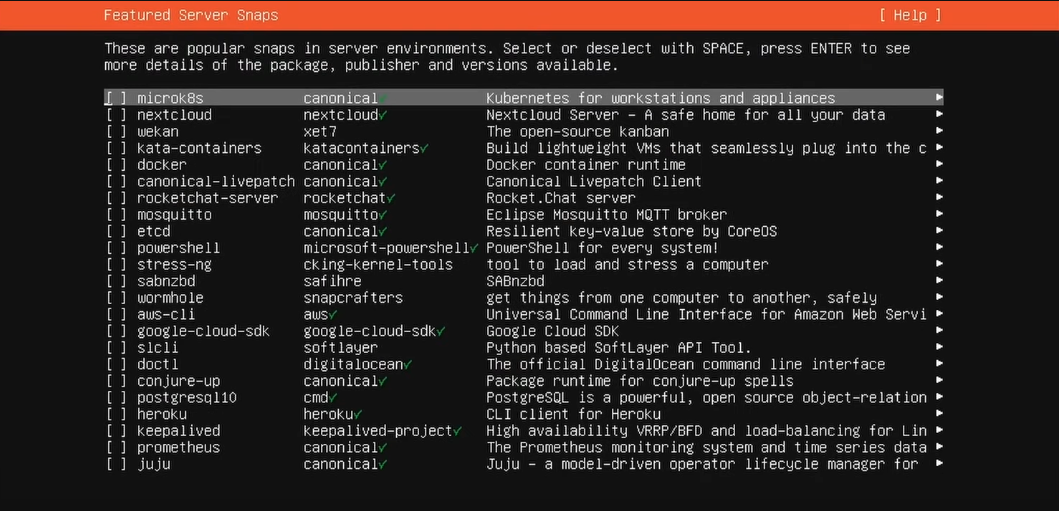
Let the Ubuntu Installation process run through until fully complete. Remove the USB device and press enter to reboot the machine.
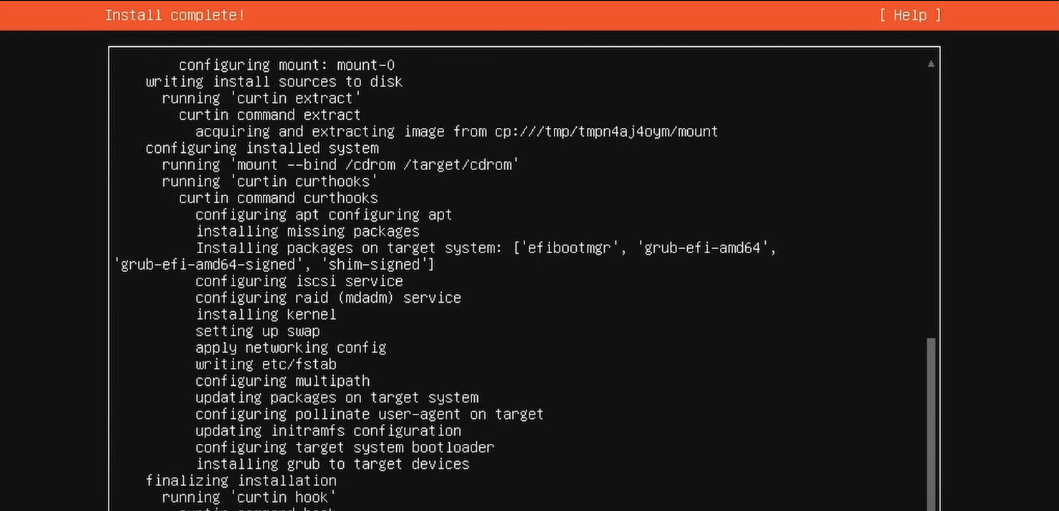
If your boot process has been alright, we can continue with the system's core setup.